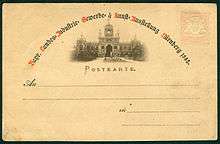Collotype

Collotype is a dichromate-based photographic process invented by Alphonse Poitevin in 1856,[1][2] and used for large-volume mechanical printing before the introduction of cheaper offset lithography. It can produce results difficult to distinguish from metal-based photographic prints because of its microscopically fine reticulations which compose the image. Many old postcards are collotypes. Its possibilities for fine art photography were first employed in the United States by Alfred Stieglitz.
The collotype plate is made by coating a plate of glass or metal with a substrate composed of gelatin or other colloid and hardening it. Then it is coated with a thick coat of dichromated gelatin and dried carefully at a controlled temperature (a little over 50 degrees Celsius) so it 'reticulates' or breaks up into a finely grained pattern when washed later in approximately 16 °C water. The plate is then exposed in contact with the negative using an ultraviolet (UV) source which changes the ability of the exposed gelatin to absorb water later. The plate is developed by carefully washing out the dichromate salt and dried without heat. The plate is left in a cool dry place to cure for 24 hours before using it to print.
To produce prints, the plate is dampened with a glycerine–water mixture which is slightly acidic, then blotted before inking with collotype ink using a leather or velvet roller. A hard finished paper such as Bristol is then put on top of the plate and covered with a tympan before being printed typically using a hand proof press. Collotypes are printed using less pressure than is used in printing intaglio or stone lithography. While it is possible to print by hand using a roller or brayer, an acceptable consistency of pressure and even distribution of ink is most effectively achieved using a press.
Because of its ability to print fine detail, it was also used for business cards and invitations with fine script lettering.
References
- ↑ "The Poitevin Patents and the Importance of Using Primary Sources". BrevetsPhotographiques.fr. Archived from the original on 2013-02-13.
- ↑ Jones, Bernard Edward. Cassell's cyclopaedia of photography. Ayer Publishing.
Further reading
- Dusan C. Stulik, Art Kaplan, Collotype. Getty Conservation Institute, 2013 (Atlas of Analytical Signatures of Photographic Processes)
